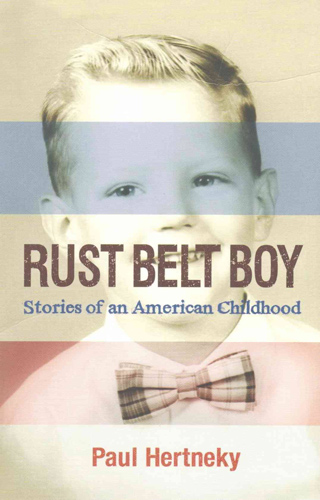Rust Belt Boy
Rust Belt Boy: Stories of an American Childhood is an outstanding portrait of Ambridge, Pennsylvania, a steel town which, like so many similar communities, helped shape and build the working America we know today. Gentle and loving, Paul Hertneky pays homage to the hometown he desired to leave for greater, unknown places. Hertneky’s descriptions left me yearning to travel to a version of the city that only exists in history books and his memoir.
Rust Belt Boy: Stories of an American Childhood is an outstanding portrait of Ambridge, Pennsylvania, a steel town which, like so many similar communities, helped shape and build the working America we know today. Gentle and loving, Paul Hertneky pays homage to the hometown he desired to leave for greater, unknown places. Hertneky’s descriptions left me yearning to travel to a version of the city that only exists in history books and his memoir.
His lyric voice brings beauty and clarity to the dirty and exhausting labors in a steel town. In particular, Hertneky’s reflection on his childhood invokes wonder and amazement at sights younger readers may never see, and memory and wistfulness in those who have seen such spectacles:
Our lives were filled with discarded molten material—ash used for traction in the snow, nuggets of pig iron, sharp metal sheets, iron filings we gathered with magnets, mercury we kept as a treasured plaything, pipes welded together for the batting cage and plates walling our steel dugouts, corrugated sheets we learned to cut and bend into sleds and shields. Aluminum, steel, tin, and iron: Scraps of it and lengths of it were lying around everywhere.
The earlier chapters of the book focus on Hertneky’s family, Eastern European immigrants and devout Catholics who hosted gatherings every Sunday. Hertneky describes how he liked to watch his family from under the kitchen table:
From there, I could pantomime with my playmate while listening to the adults’ voices, taking in the whole ensemble, sorting the tones, since their language made no literal sense to me. I relied on cadence, codas, like improvisational jazz, and the solos I could identify—Uncle Steve, the saxophone, Ucina a reedy clarinet, the percussion of my grandfather. I hear them now in the arrangements of Dave Brubeck.
The adoration with which Hertneky describes his relatives is both familiar and intimate, particularly with his parents and grandparents. In one tender passage, he describes his perception of his maternal grandmother:
I first noticed her hands when I was four or five. We pulled weeds in her garden. I tore off the tops and tried to mimic her, the way the knuckle of her index finger pressed into the dirt before expertly extracting roots and all. Her hands happily entered soil, yet were pink and delicate when she tatted lace and cut noodles, dried my tears and pinched rosary beads.
As the collection shifts in focus to Hertneky’s young adult life, and life outside of Ambridge, Pennsylvania, he still weaves in reflections on his family members, acknowledging the impact they made in shaping him.
Throughout the book Hertneky quietly acknowledges how life in the shadow of industry is embedded within him today. One of the most powerful images is of a ritual that began when he was a toddler: his father slowing the car down in front of the Byers iron mill.
I would stand on the back seat and watch the giant thermos-shaped smelters tip skyward and shoot flames, sparks, and gobs of molten iron into the night air. Thirty feet tall and girded with heavy iron, these twin behemoths exhaled a sulfurous cloud that bathed the Ford in a warm wave, like standing in front of Godzilla when he’s really pissed off. And I saw that show and felt that breath every week. Awesome. It ignited something in me that still burns.
Paul Hertneky’s memoir is a kind of portrait and love letter to Ambridge, Pennsylvania, and perhaps to lifestyles and freedoms that have since faded. His storytelling interspersed with researched elements reads seamlessly, leaving readers with insight and appreciation for the blue collar town.





